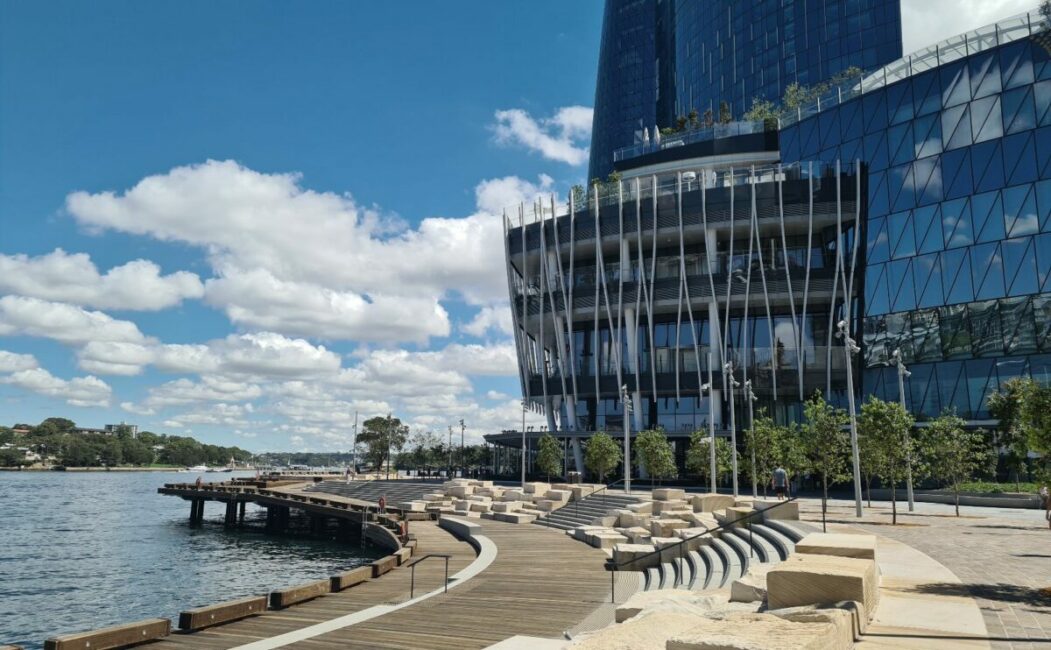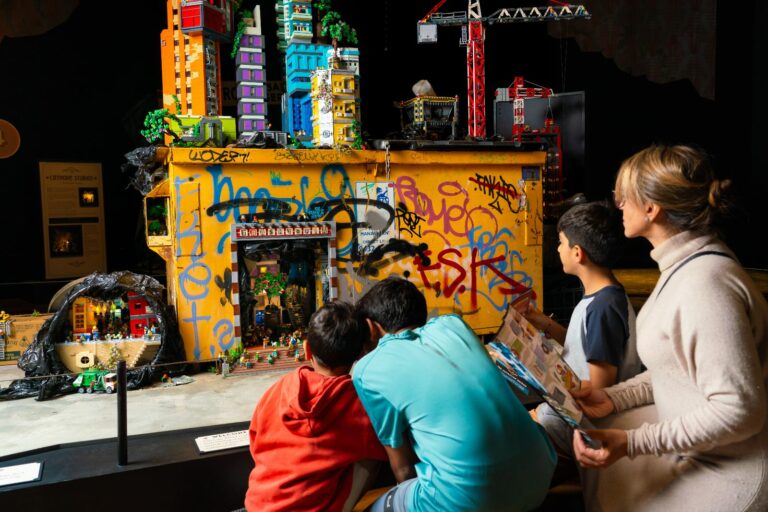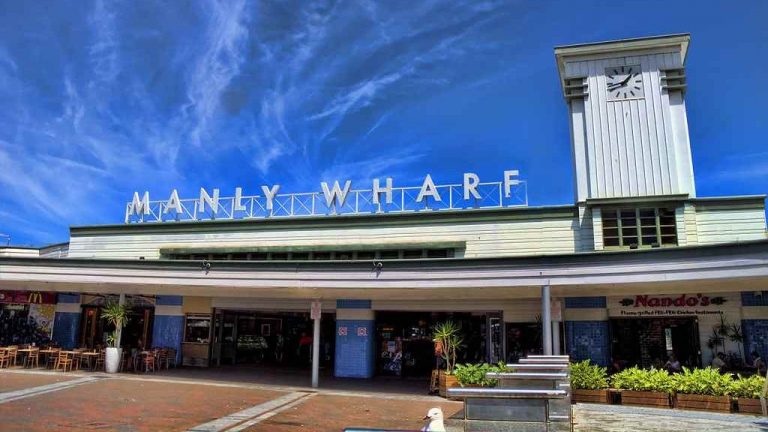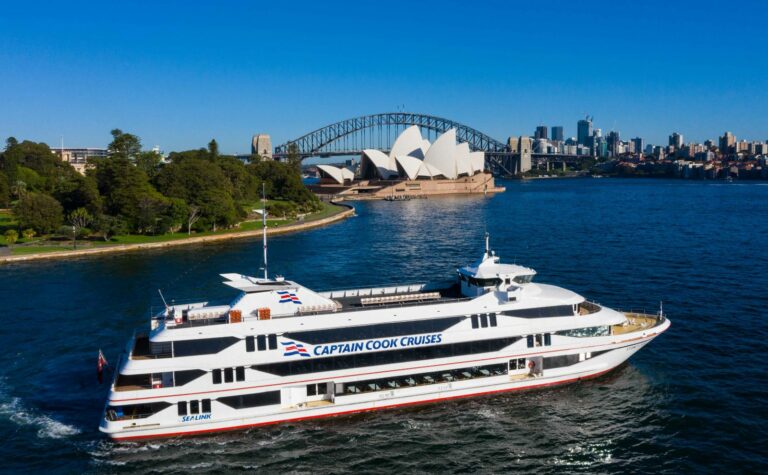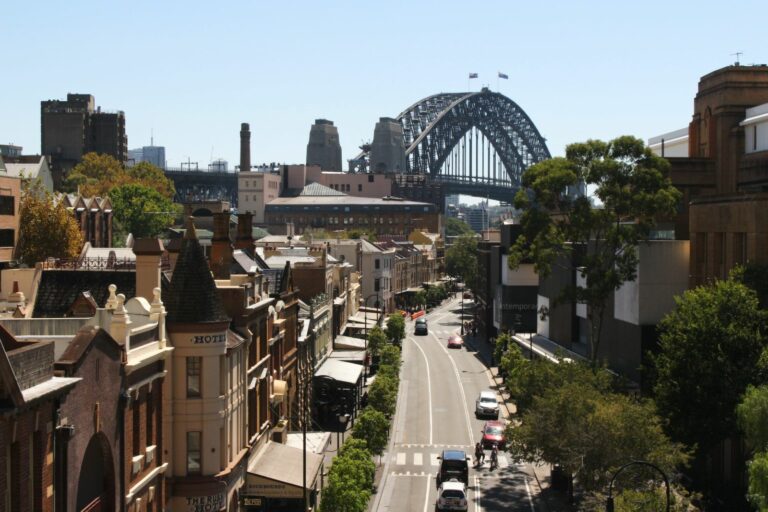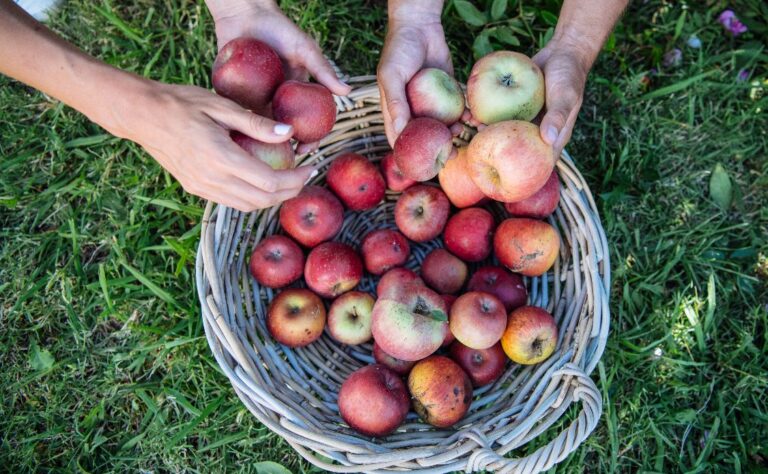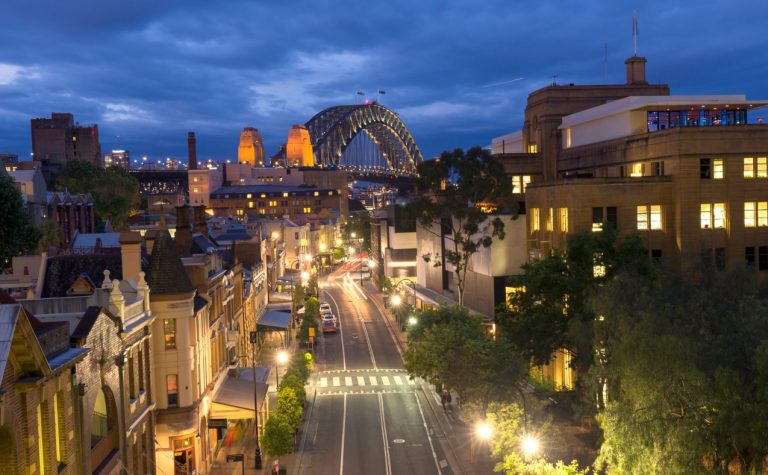Art, Architecture, and Ancient Wisdom: Discovering Barangaroo
Barangaroo, Sydney’s newest harbourside precinct, is a fascinating blend of history, culture, and urban design. But what exactly can you expect from a visit to this 22-hectare site? To answer this question, we’ve invited local expert and frequent contributor Joanne Karcz to take us on a journey through Barangaroo’s highlights.
This page contains affiliate links. You can find our full disclosure policy here.
From ancient Aboriginal connections to cutting-edge architecture, Joanne’s guide offers an insider’s look at this dynamic area. Whether you’re a first-time visitor or a curious local, join us as we explore the tours, walks, art installations, and hidden gems that make Barangaroo a must-visit destination in Sydney.
What to do in Barangaroo
What’s there to do in Barangaroo? Plenty as it turns out. Perhaps join a tour – or two, explore the public art, enjoy a walk or have a swim, then picnic on Stargazer lawn.
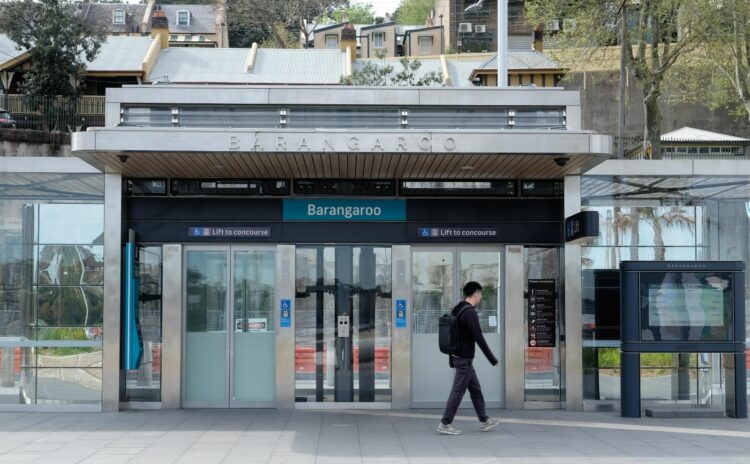
With the Sydney Metro, it’s easy to get to Barangaroo from the city. And then return by ferry to Circular Quay.
A bit of background
Barangaroo is a recreational, commercial and residential area covering 22 hectares. It is named after a strong Cammeraygal woman. Unlike her second husband, Bennelong, a Wangal man who adopted European dress and other colonial customs, Barangaroo, refused to change her ways. She continued to wear traditional clay paint and a bone through her nose.
In the 1800s, the area was a hive of industry and a busy maritime port. By the mid-1900s, the area was no longer viable as a port, leading to the development that we see today.
Sky Deck Tour
Starting promptly at 8:00am, the free Crown Sydney’s Sky Deck Tour is perfect for early risers. Ears pop as guests whizz up to the 83rd floor 250 metres above the ground.
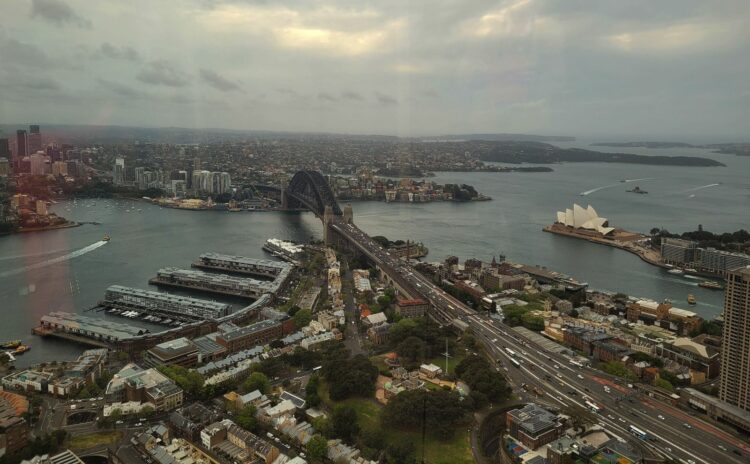
From a small, glassed-in deck enjoy extensive views of Sydney Harbour, from North Sydney across to Manly and Watson’s Bay.
After the tour take a lift to the 5th Floor of the Crown Hotel to view the digital light display lining the circular staircase.
Bookings for the half hour tour open each Monday for the following week. With only 12 tickets available each day, book early to avoid disappointment.
Barangaroo Aboriginal Tour
Led by an Indigenous guide, the tour introduces guests to Aboriginal culture and how indigenous people used some of the 75,000 native Australian trees and shrubs planted in Barangaroo Reserve.
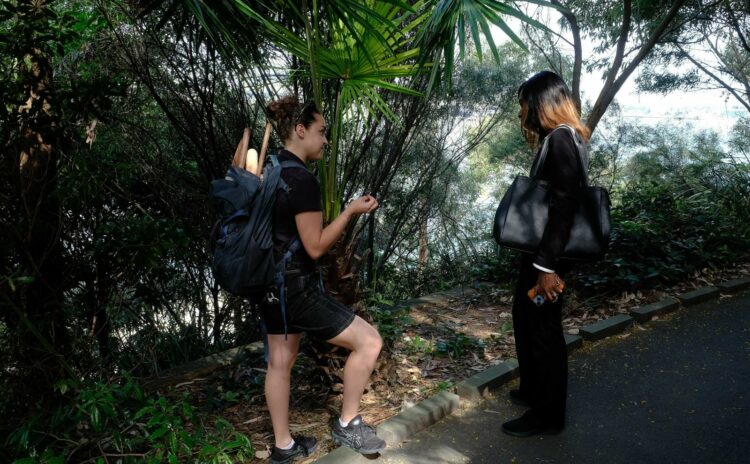
Feel the cool, smooth trunk of a grey gum and hear why it’s also called a ghost gum. Taste the white end of a long narrow Lomandra leaf before splitting the leaf into strips and learning how people used these leaves to weave baskets.
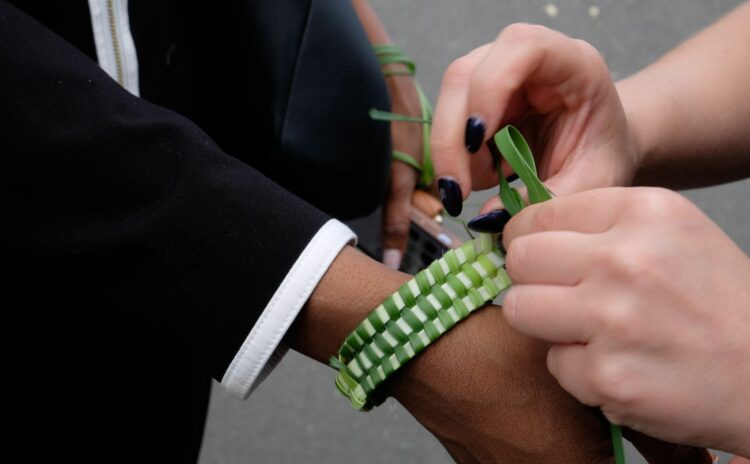
There’s much to learn about Aboriginal culture on this 90-minute tour which runs at 10:30am.
Mon-Sat. Tickets are from $16.50 (children) to $36.30.
Wulugul Walk
After the tour perhaps take a dip in Marrinawi Cove before strolling back to the commercial centre of Barangaroo. Wulugul Walk is a flat harbourside path, part of the longer 11km walk from Woolloomooloo to the Anzac Bridge.
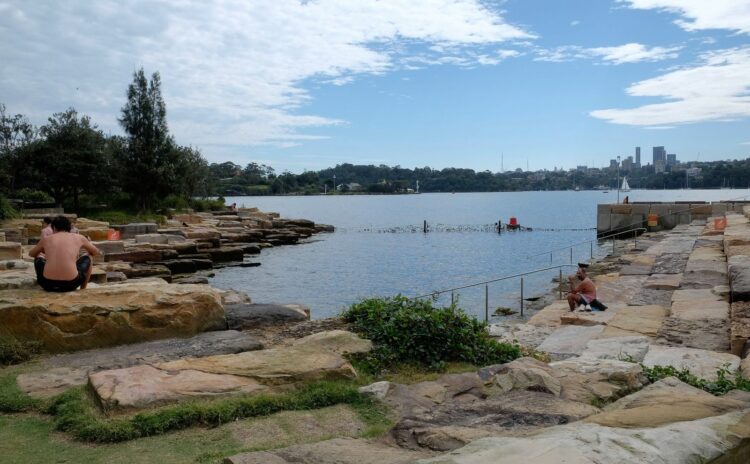
Rest for a moment on one of the tiered sandstone blocks lining the glittering waters of Nawi Cove. Then look behind you at the steep rockface lining Hickson Road. There, look for the Steps to Nowhere, a flight of stairs inaccessible from either end.
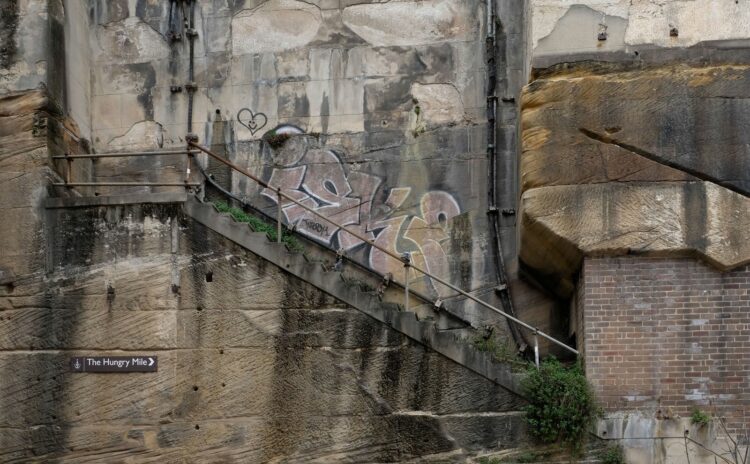
Beneath the stairs is a sign “The Hungry Mile.” It is here that during the Great Depression workers went from wharf to wharf looking for work, often without success.
Wulugul walk continues past Barangaroo Metro Station towards the tall twisting glass tower of Crown Sydney. The artwork on the building hoarding surrounding the building site for Central Barangaroo is by Aboriginal artist Danie Mellor. Called Remembering, the work looks back at how the landscape might have looked before colonisation.
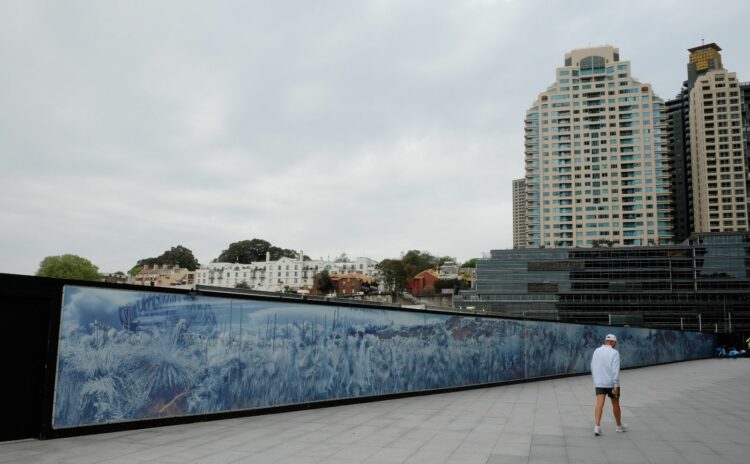
Further on, pass an outdoor gym and handball court surrounded by picnic tables where office workers and visitors take time out from their busy day.
Public Art in Barangaroo
More public art awaits in Barangaroo’s commercial area. As sunlight passes through Sabine Horning’s Shadows, the brightly coloured glass panels come to life.
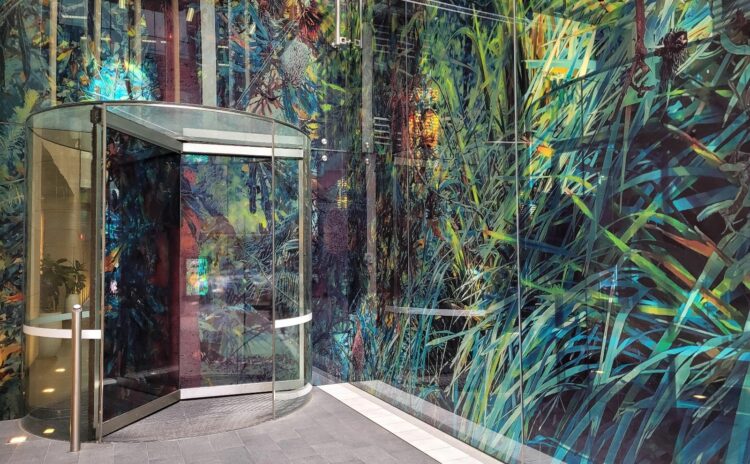
The work, depicting Sydney’s native flora makes it a joy to walk through the 170-metre walkway between the three International Towers of South Barangaroo.
In Exchange Square, look up. Mermer Waiskeder: Stories of the Moving Tide consists of eleven eagle rays, suspended above the square.
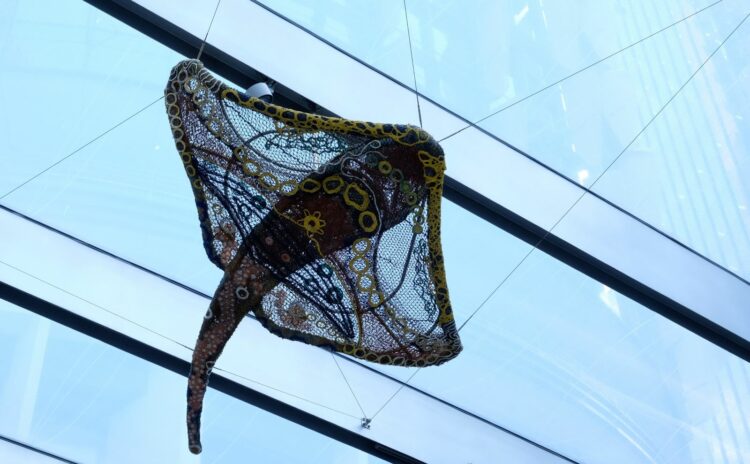
Using abandoned fishing nets, the Ghost Net Collective, a group of Indigenous and non-Indigenous artists from Cairns, created the sculptures by hand. Remember to look down to see their shadows dancing on the paving below.
At 1D Shelley Street, you will find a cluster of four enormous, variously shaped pottery bowls or vases. Anton James created the white and red vessels which form Anemone, in 2009. They disguise air vents from the car park below.

Over the road, Beacon is made up of bronze-anodised aluminium tubes reminiscent of organ pipes.
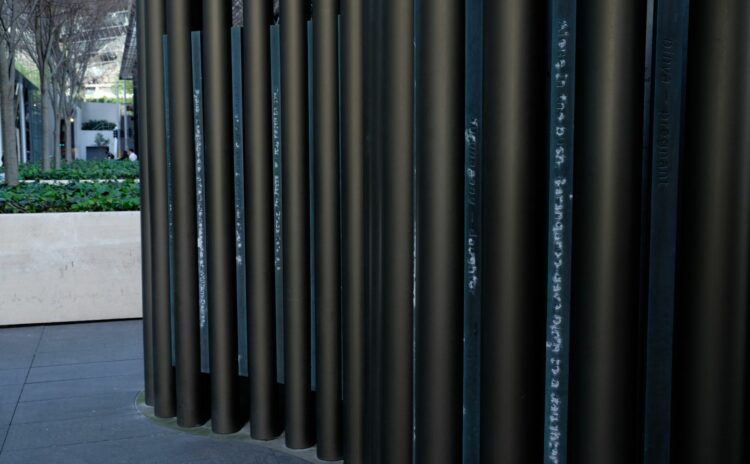
It too surrounds air vents. Between the tubes, phrases and sentences etched into flat posts tell the story of Barangaroo and the original inhabitants of the area. Over time the words have become corroded and difficult to read.
Shellwall, by Esme Timbery and Jonathan Jones celebrates the shell-making tradition of La Perouse’s Aboriginal community.
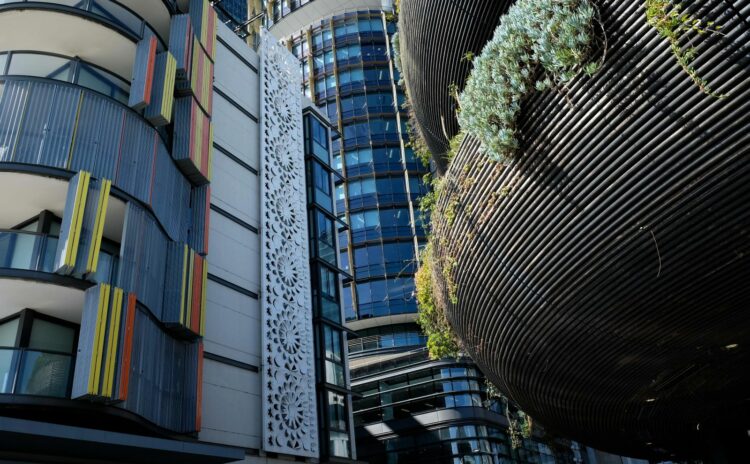
The vertical wall of shells cut from a white strip of aluminium adorns the façade of the Alexander residential building in Barangaroo’s southwest corner.
Before you go
Before leaving Barangaroo, stop for a coffee or a drink and a bite to eat. There’s something to suit all budgets from a simple sandwich and coffee to a high-end meal and fine wine or cocktail.
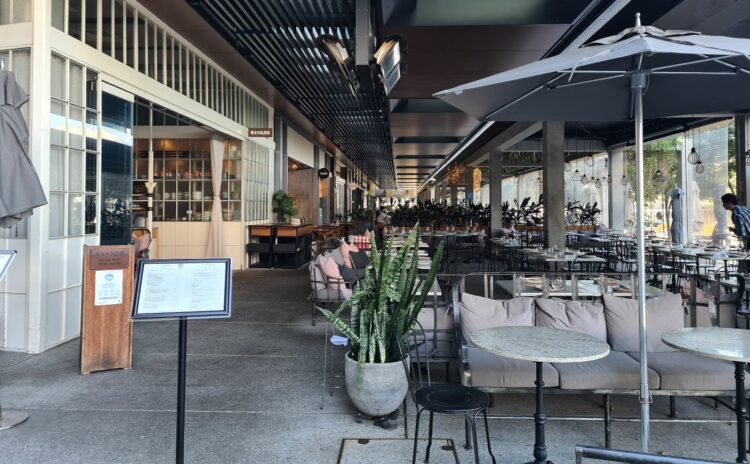
For a little sweet something, most visitors can’t go past the renowned ginger brulee tart at Bourke Street Bakery.
Check out some more indigenous sculpture in Sydney when you are done
Have questions about things to see and do in Sydney?
Head over and join our Facebook Group and we will be happy to help.

